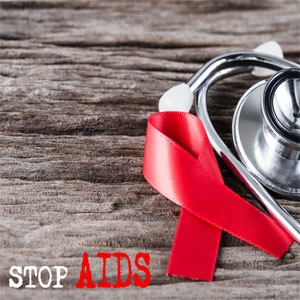
More women than men are now HIV-positive. In South Africa, HIV prevalence in women aged 15-24 is nearly four times greater than men of that age.
This is partly because women usually become infected at a younger age than men. In Africa, many young women have sexual relations with older men who are more likely to be HIV-positive, with the result that far more young women than young men get infected.
HIV is also more common in women because they’re at higher risk of infection. The reasons are both physical and socio-cultural.
Sex carries a higher infection risk
Heterosexual intercourse carries a higher risk of infection for women.
During sex, semen enters the vagina, where it can stay for several hours, increasing the risk of infection. The virus enters the bloodstream via tiny sores that form in the sensitive lining of the vagina during intercourse.
Certain sexual practices between men and women, such as dry sex (a common practice in South Africa, where the vagina is dried out to increase pleasure for the partner) and anal sex, carry an even greater risk of HIV because they cause more severe vaginal or anal abrasions.
Unequal power relations
Unequal power relations between men and women, particularly when negotiating sexual relations, increases women’s vulnerability.
In South Africa, and throughout Africa, male-dominated culture socialises men to feel that they’re superior to women, that they should control them, and that women should be submissive. Women’s inferior status means that they often have little or no power to negotiate safer sex.
Physical and sexual violence against women, a major problem in South Africa, is closely linked to the male-dominated nature of society. Sexuality is one of the most common areas in which men exert power over women through violence: women may be beaten for refusing a sexual advance, wanting to end a relationship, or having or being suspected of having other partners.
Many men still don’t want to use condoms, and some become violent to force women to have unprotected sex. Women may not even raise the issue of safer sex for fear of a violent response.
Gender-based violence is attributable to an estimated 20-25% of new HIV infections in young women.
Lack of economic power
Lack of economic power often results in women being dependent on their male partners for basic needs for themselves and their children, especially where state support is lacking.
This dependence means women are often not able to question or challenge their male partners for fear of being denied financial support.
Many women feel they can’t risk losing their partners by refusing to have sex, even if it’s unsafe, and fear not being able to survive financially should they themselves leave an abusive relationship.
Studies show that women who are economically independent are far less likely to be abused by male partners. Preventing women from working is a fairly common act of abuse by men, and one that increases women’s economic dependence and reduces their ability to resist other abusive acts.
High incidence of rape
South Africa has the highest rape statistics in the world, with an estimated 147 women raped every day.
In the past, rape survivors risked unwanted pregnancy and other sexually transmitted infections; now they also risk being infected with HIV.
The risk of HIV transmission through rape is higher than through consensual sex, and much higher if there’s associated trauma (injury). Forced sex frequently causes abrasions to the vagina, and this increases the rate of infection.
When virgins and children are raped, the trauma is even more severe, and risk of infection even greater.
Although violence against women occurs throughout society, the most affected groups include working class and poor African communities, as women in these areas have less access to financial resources and limited means to secure legal rights.
Female sex workers are another group of women at high risk of physical and sexual violence.
Women who have been sexually abused are more likely to risk unsafe sex, have multiple partners, and trade sex for money or drugs.
Men who are violent to their partners are also more likely to have STIs. All these factors place women who suffer sexual violence at higher risk of HIV infection.
Lack of education
Many women lack access to accurate, relevant information on HIV/AIDS and sexuality, and are therefore unaware of the risks.
Women have high rates of illiteracy in Africa, and many girls don’t complete basic education. Also, women may be unaware of risks because their time is taken up with tending the home, and they have limited links with the outside world.
Some men isolate their female partners by preventing them from seeing family and friends, speaking to other men, or working.
Migratory labour practices
Migratory labour practices put rural women at risk.
Men who work as migrant labourers frequently become infected at their place of work, and then carry the infection back to their wives or partners at home.
Reviewed by Dr Pooja Balani, MBBS (UK). Medical Technical Advisor at the Southern African HIV Clinicians Society. March 2018.




 Publications
Publications
 Partners
Partners











